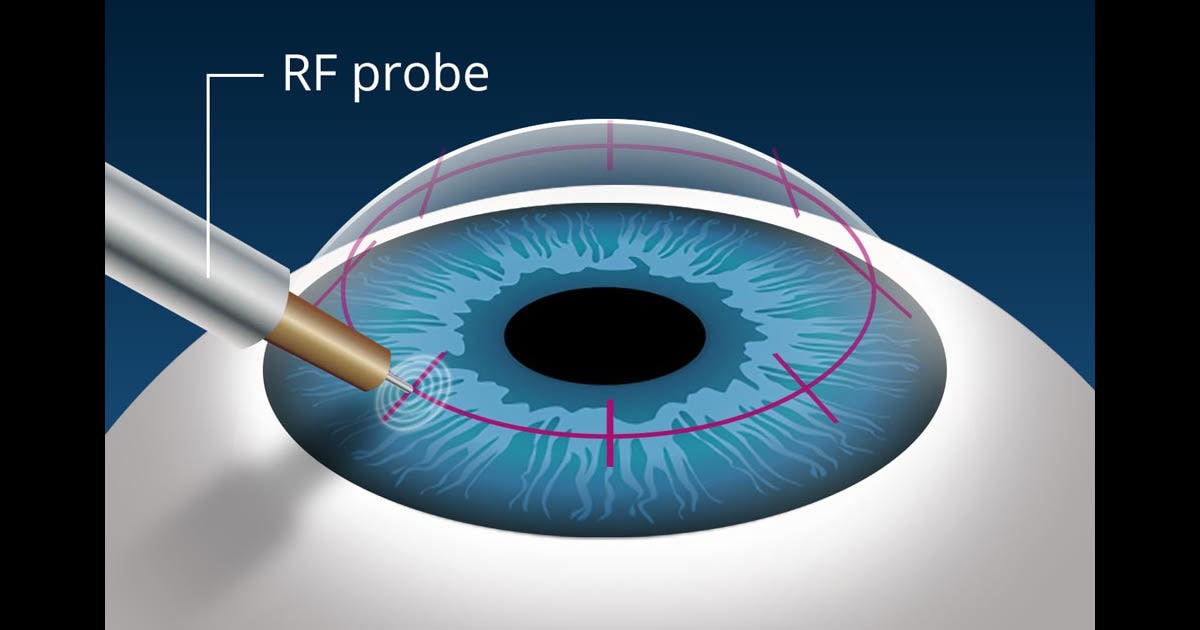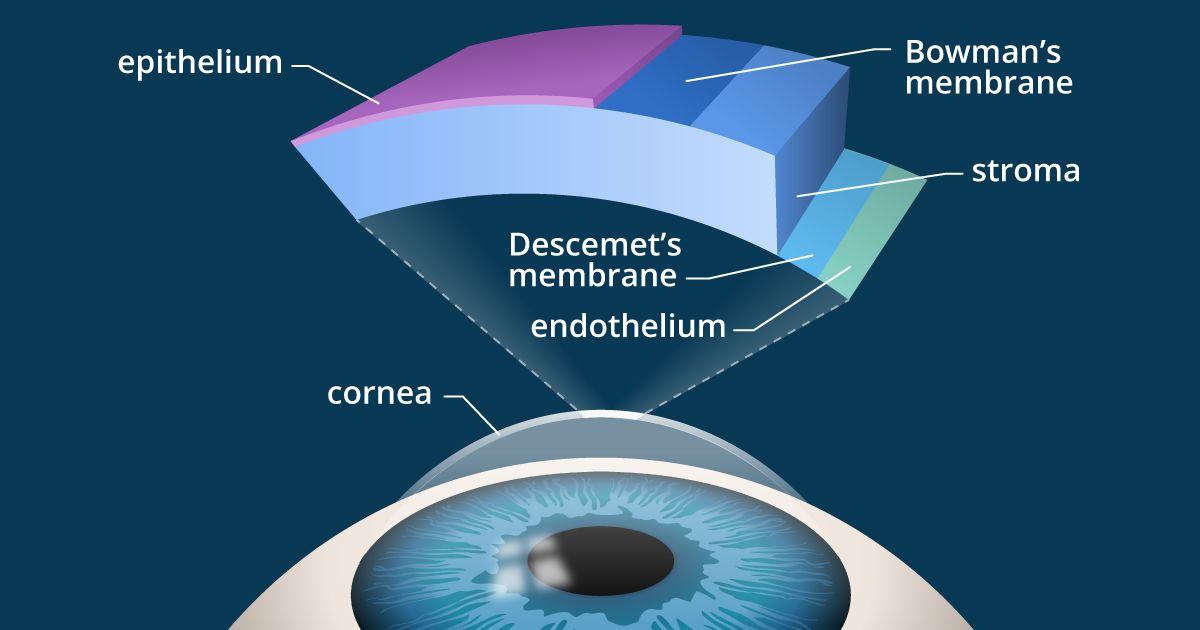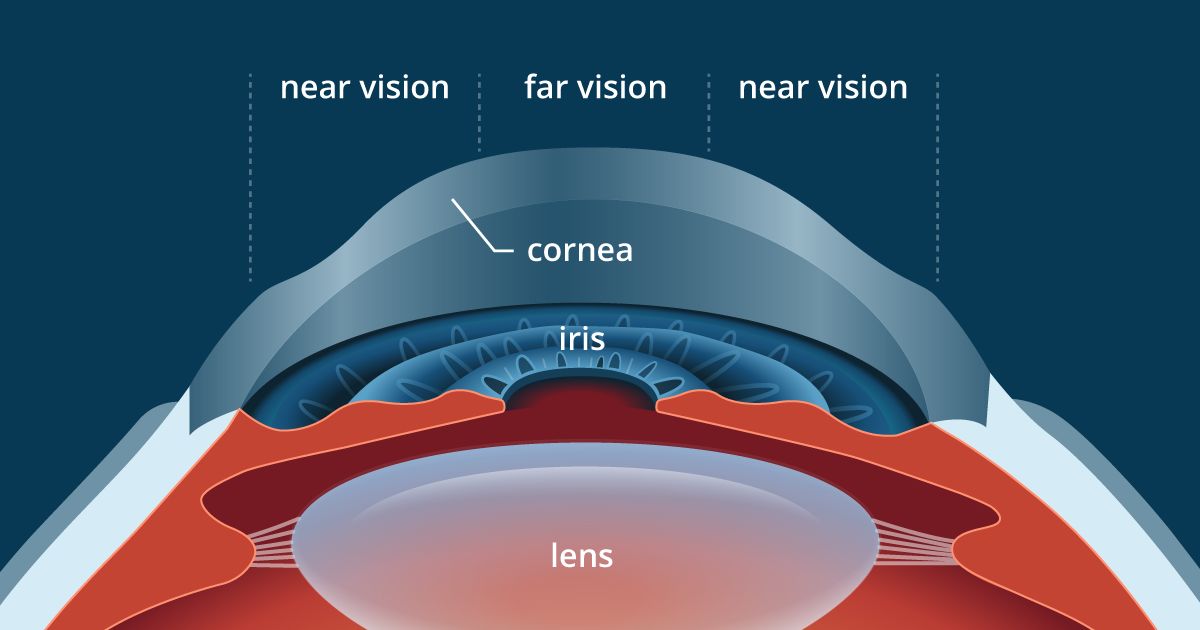After age 40, the single pair of glasses or contact lenses you previously wore generally will no longer give you clear vision at all distances — or at least not without some compromises.
These vision problems are caused by presbyopia, which affects all of us beginning in middle age and reduces our ability to see at all distances.
Many vision correction options are available, such as presbyopia surgery and multifocal contact lenses or eyeglasses. If you need cataract surgery, you also have the option of choosing multifocal intraocular lenses to restore your ability to see at all distances.
In some cases, however, you may need to consider a combination of options to fully address problems caused by presbyopia.
Removing your eyeglasses to read
If you are nearsighted, you have an advantage when you reach your 40s.
Once presbyopia occurs, nearsighted eyes still see well up-close — if you remove your eyeglasses. Of course, with your glasses removed, distance vision is blurred. So you will need to put your glasses back on to see clearly across the room.

Beginning at around age 40, you'll find that the usual glasses or contacts you always wore will not correct focusing problems caused by presbyopia.
The amount of nearsightedness you have determines how close or far you need to hold an item to see it clearly without your glasses on.
If you are mildly nearsighted (with a prescription of -1.50 or -2.00 D, for example) you will see very well at a normal reading distance of 14 to 16 inches from your face.
But if you're highly nearsighted (let's say -5.00 D or higher), you'll have to bring items much closer to your eyes to see them clearly. If that's the case, you may want to consider the next option.
Multiple eyeglasses with single vision lenses
Though it's certainly less convenient than wearing just one pair of eyeglasses with progressive lenses, bifocals or trifocals, many people over age 40 deal with presbyopia by purchasing two or more pairs of eyeglasses with single vision lenses.
One pair of glasses usually will contain lenses prescribed for distance vision (driving, watching television, etc.); and a second pair may contain single vision lenses prescribed specifically for computer work, reading or other near-vision tasks.
This option offers several visual advantages:
Single vision lenses prescribed specifically for distance vision or near vision work better if you need to look upward or downward. If you've ever tried to sit back on your recliner or watch TV in bed while wearing eyeglasses with progressive lenses, you know that the near part of the lens interferes with your ability to see clearly across the room when your head is tilted back.
Similarly, single vision lenses prescribed for near work are great for performing car repairs or other tasks where you need to see close-up objects above your head. So there's no need to crane your neck back or prop your glasses up to get into that near zone as you would with a bifocal, trifocal or progressive lens.

Some people find that using different lenses in eyeglasses is the best solution for presbyopia. For example, sunglasses with distance correction for nearsightedness can work well for driving, and glasses with intermediate correction for computer work.
Single vision lenses offer advantages for computer work or reading. Your eye doctor can customize the prescription for the exact working distance you prefer, and you get an unrestricted field of view at that distance.
This is particularly important for sustained computer work, where standard bifocals and multifocal lenses (trifocal or progressive) can cause posture problems that contribute to computer vision syndrome.
Multiple pairs of eyeglasses with single vision lenses enhance your peripheral vision and therefore your mobility. Particularly when you enter your 60 sand 70s, normal, age-related changes reduce your peripheral vision, and progressive, bifocal and trifocal lenses can worsen the problem.
Single vision lenses provide a wider zone of clear vision than progressive lenses, and they give you a much better view of your feet when you're looking down to step off a curb or onto an escalator or a flight of stairs.
(It's very possible that some seniors who have fallen may not have done so had they been wearing single vision lenses.)









